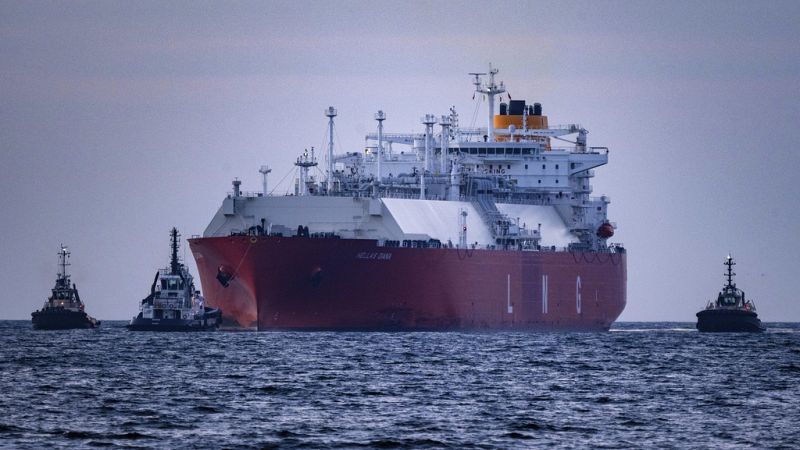LNG imports plummet amid falling EU gas demand

With European gas demand at an 11-year low, imports of liquefied natural gas (LNG) into the EU fell 16% last year compared to 2023, an evolution of the market that could have significant geopolitical implications.
With pipeline gas from Russia reduced to a trickle since the Kremlin launched its invasion of Ukraine in 2022, the EU has compensated by increasing imports of LNG, especially from the US – but also, controversially, from Russia itself.
Still, the Institute for Energy Economics and Financial Analysis (IEEFA) reported on Tuesday, the EU’s regasification terminals – where shipments of LNG are pumped into the gas pipeline network – were running at an average of just 42% capacity, with many barely used.
Since February 2022, the EU has added import capacity for some 50 billion cubic metres of gas a year, mainly in Germany, the Netherlands, Italy, France and Finland. Based on current plans and demand trends, total capacity could be utilised at just 30% by 2030, the energy transition think tank warned.
“Doubling down on new LNG terminals without taking into account demand trends raises the risk of overinvestment and infrastructure being under-utilised as the energy transition accelerates,” said Ana Maria Jaller-Makarewicz, IEEFA’s lead analyst for European energy.
Šefčovič goes to Washington
But the stranded, or underused, assets may not be the most immediate concern in Brussels. The EU continues to import significant amounts of Russian LNG – despite the European Commission’s unofficial target to end all fossil fuel imports by 2027, which is to be the subject of a ‘roadmap’ slated for publication on 26 March.
Before then, vice-president in charge of trade Maroš Šefčovič will travel to Washington on Wednesday (19 February) to try to head off an EU-US trade war, the most senior EU official to be dispatched since Trump’s inauguration.
He is doubtless aware that among the US president’s various ultimatums and threats in recent months was the promise to impose sweeping tariffs on Europe unless it ramps up imports of LNG.
The commissioner will meet with US Trade Representative Jamieson Greer, Commerce Secretary Howard Lutnick, and Trump's chief economic adviser Kevin Hassett. The EU executive declined to address the substance of the talks but said Šefčovič would convey “in a very forthright way the European Union's principled belief that tariffs serve no one and that they drive us towards lose-lose outcomes”.
Brussels monitoring ‘very closely’
The Commission's energy spokesperson Anna-Kaisa Itkonen would not confirm whether or not energy specifically was on the agenda, but noted that “LNG is something that President von der Leyen has mentioned as being a topic that we have, in the past as well, discussed with the US”.
Imports of LNG from the US amounted to 63bn cubic metres last year, or 46% of the total – but IEEFA’s data suggests there would be room to increase this volume, given nearly 22bn of Russian LNG was also imported, 18% up on 2023 volumes.
“A third of EU imports of Russian LNG were spot trades in 2024,” Jaller-Makarewicz said. “Member states should prioritise phasing out these flows, which aren’t subject to long-term contracts.”
Brussels – which has so far balked at imposing sanctions on gas – was monitoring gas demand very closely as it finalises its exit strategy from Russian energy dependence, Itkonen said. “Obviously all of this information and all these statistics will feed into this work,” she said.
Monday (24 February) will mark three years since Russian tanks poured across Ukraine’s border. In that time, a combination of demand reduction measures and renewable energy deployment have seen overall EU gas demand fall by roughly a fifth.
Today

